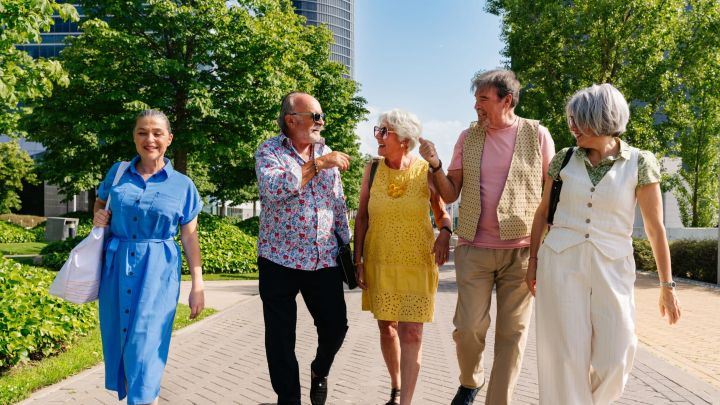Why America’s Demographic Shift Demands Age-Friendly Communities

By: Michelle Matter
In the latest U.S. Census Bureau report lies a powerful story: America is aging, and it’s aging quickly.
In 2024, the number of Americans aged 65 and older grew to over 61 million, while the child population dipped slightly to 73.1 million. That might seem like a footnote, until you realize what it means. The gap between childhood and older adulthood as the dominant life stages in our communities is narrowing. In many places, that gap has already disappeared.
Two decades ago, children made up a full quarter of the U.S. population. Today, they account for just 21.5%, while older adults have surged from 12.4% to 18%.
In 2020, only three states had more seniors than children. Just four years later, that number has grown to 11, and more than 100 metropolitan areas now have older adults outnumbering kids, and not just in traditional retirement states like Florida, but in Pennsylvania, West Virginia, and Hawaii.
These demographic changes pose real challenges: increased pressure on healthcare systems, evolving workforce needs, and a growing demand for accessible housing and transit. But they also offer a unique opportunity, one to redefine what inclusive, livable communities look like.
As people live longer and birth rates continue to decline, we must rethink how we design neighborhoods, public spaces, and support systems. Communities must move beyond outdated assumptions about aging. We need to recognize it not as decline, but as a powerful life stage that requires respectful support and meaningful engagement.
This is where the SDSU Center for Excellence in Aging & Longevity (CEAL) plays a pivotal role in helping shape what age-friendly communities can and should be.
Guided by the World Health Organization’s Domains of Livability, CEAL supports cities and regions in developing Age-Friendly Action Plans tailored to local needs. These plans focus on accessible transportation, inclusive outdoor spaces, intergenerational programs, health and community support, housing, and social participation.
But here’s what makes this approach powerful: It’s not just about older adults. Thoughtful community design supports people of all ages and abilities. As we like to say, “What’s good for 80 year olds is good for 8 year olds”.
As CEAL continues to collaborate with partners across the country to develop actionable, inclusive, and forward-thinking Age-Friendly plans, one message becomes clear. It’s not just about helping people grow older, it’s about creating places where growing older is safe, supported, connected, and valued.

